Sri Lanka has many colonial period monuments and chief among them are the forts, which are mainly of Dutch origin. While much has been studied about them, the archaeology of such sites of the Early Modern Period has rarely been investigated. It is only in the last few years that detailed archaeological excavations have been undertaken in Jaffna and recently in Galle. However, the first site to be scientifically excavated with the aim of investigating the archaeology of the site was the Dutch Fort of Katuwana, which took place 20 years ago. This is a look back at Katuwana Dutch Fort excavation.
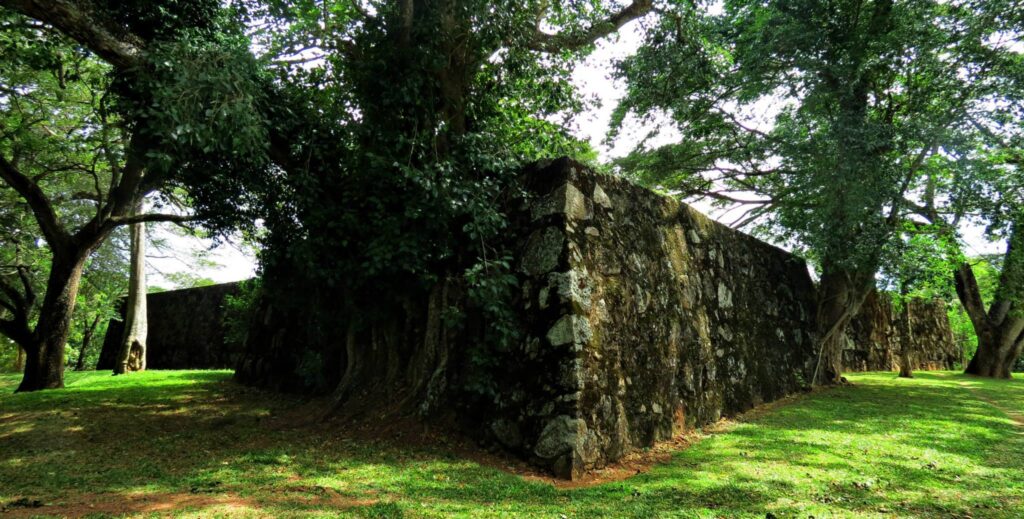
Katuwana is a small fort located about 50km northeast of Matara in the Hambantota District. Falling under the historical Dolosdahas Korale the fort lies on the eastern bank of the Urubokka Oya on a small hillock. It is a square fort with two diagonally opposite bastions and is built of stone.
The first reference to a military presence in the area is in 1597 when the army of King Vimaladharmasuriya encamped at Katuwana but was immediately attacked by the Portuguese. The next significant establishment is when the Dutch take over the area in the mid-17th century. Katuwana is first mentioned as a field fortification of the Dutch in 1661 but they soon build a stronger stone fort from 1679 to 1681. Katuwana is also one of the few forts successfully attacked and captured by the Kandyans. This happened in 1761 during the Matara offensive of the Kandyans as part of the war of 1761-1766. Although the Dutch reclaimed the area, the fort remained of little significance. The fort was also occupied by the British but once again the Kandyans besieged the fort in 1805; after which it was subsequently abandoned forever.
The annotations on a plan of Katuvana in the map 4.VEL 1075 (Netherlands National Archives) and dated to ca. 1695, are listed as the guardroom, two sergeant’s rooms, a small house for the constable, an arsenal, a powder house, a provisions store, and a well. The garrison during the first half of the 18th century consisted of about 18 people. In 1712 it is recorded that there were twenty soldiers and eight cannon. In 1734 the fort was visited by J.W. Heydt where he writes: ‘…the whole fort is built to mount twelve cannon only . . . it is not provided with too large a garrison, yet if this were of forty men only, it should be able to resist a considerable number of blacks…’
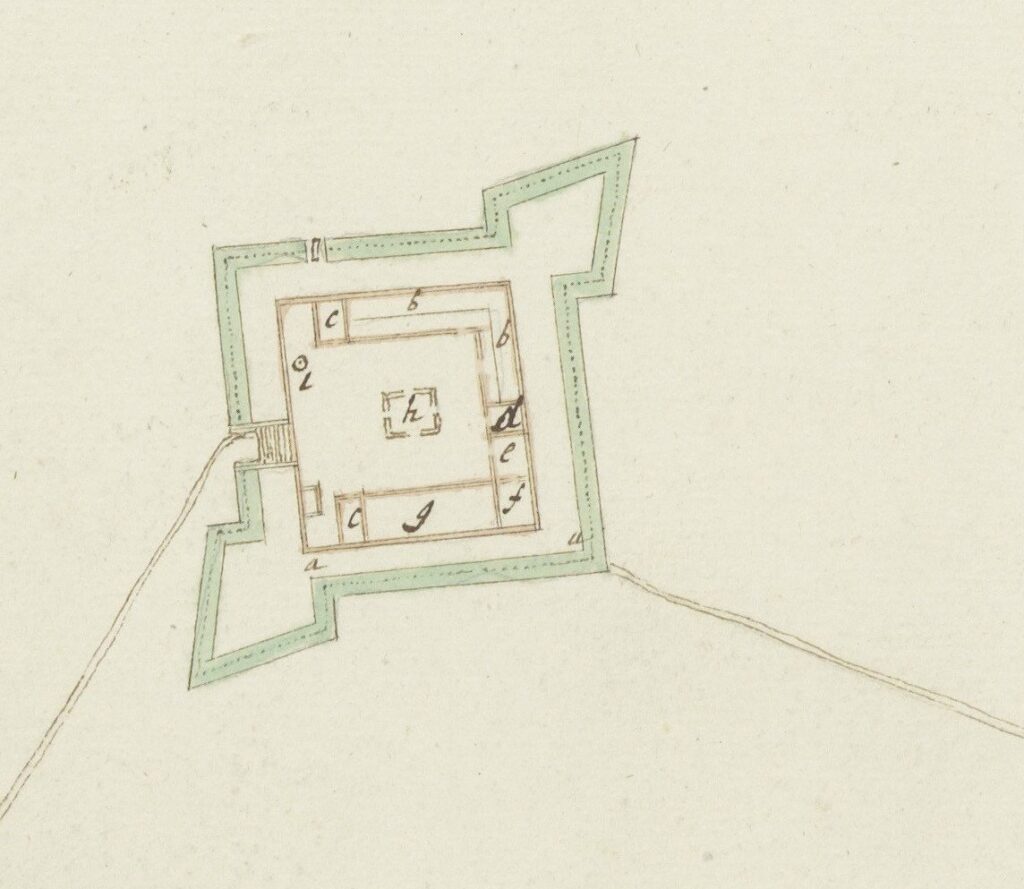
The Katuwana Dutch Fort Excavation
Speaking to the Dutch-SriLankan archaeologist Dr. Ranjith Jayasena, who was then a student and part of the excavation, he said that the Katuwana project was initiated in the late 1990s by Prof. Jerzy Gawronski and late Prof. Senaka Bandaranayake. Thus the ‘Katuwana Archaeological Heritage Project’ was established, which was a collaboration with the Postgraduate Institute of Archaeology (PGIAR) of the University of Kelaniya and the Amsterdam Archaeological Centre (AAC) of the University of Amsterdam. This collaboration aimed at understanding the archaeology of the colonial Dutch period during the 17th and 18th centuries and the wider impact of the VOC enterprise on the cultural interactions between the locals and foreigners; and as such, Katuwana was selected as a pilot case study.
Excavations were carried out between January and February 2000 under the overall scientific responsibility of Dr. S. Lakdusinghe (then Director of PGIAR), Prof. Anura Manatunga (then Senior lecturer of the University of Kelaniya), and Prof. H. A. Heidinga (Professor of post-Medieval Archaeology of AAC). The Consultants were late Prof. Senaka Bandaranayaka and Prof. Jerzy Gawronski.
The excavation design was drawn up and guided by Prof. Gamini Adikari (then lecturer at PGIAR), Prof. Raj Somadeva (then Senior lecturer PGIAR), and Dr. Ranjith Jayasena (then a student) of AAC. Ranjith Jayasena also supervised the excavations with assistants from the PGIAR. This excavation formed the basis for Ranjith Jayasena’s Master’s thesis by the University of Amsterdam in 2002.
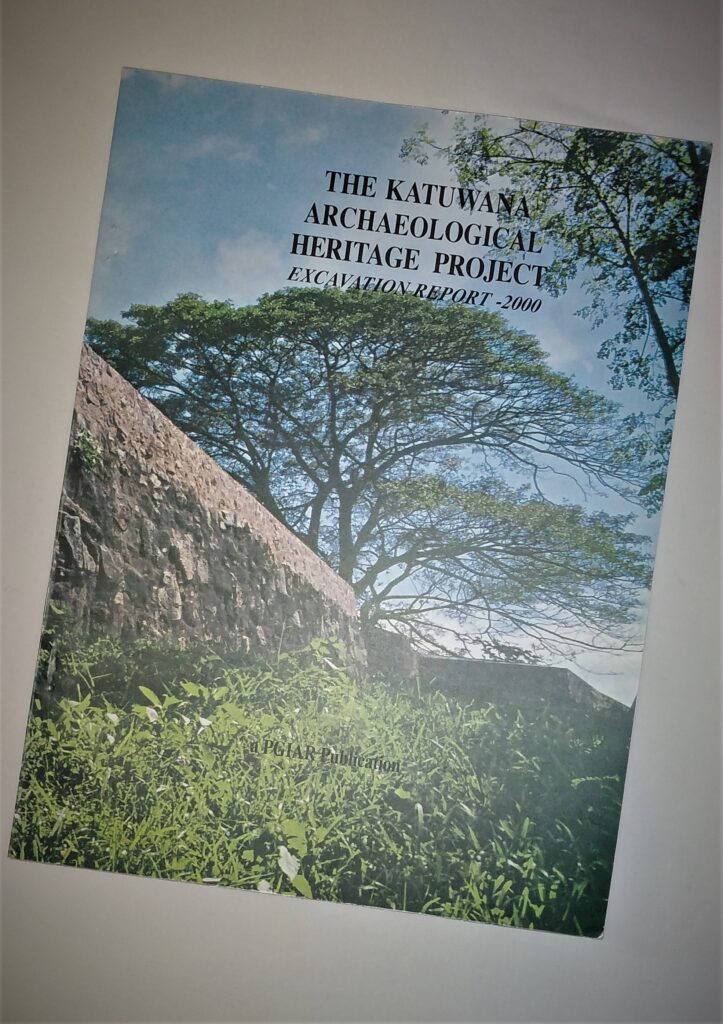
The three main goals of the project are summarized as:
- A survey of Dutch fortifications in the coastal areas between Kalpitiya and Hambantota including frontier forts.
- The large scale test excavation of Katuwana Dutch fort
- Conservation of Katuwana
The scientific research aims for the project were:
- The development of historical and archaeological research into 17th- and 18th-century fortifications in Sri Lanka. Historical records and physical evidence offer different lines of evidence with regard to the functioning of the forts.
- Research into the environmental impact of the Dutch settlements.
- The development of a Sri Lankan–Dutch research programme for the study of the material culture of European–Asiatic contact sites. Sri Lanka was part of an interlocking system of VOC settlements in the Indian Ocean area, with both trade goods and people going back and forth. The archaeological record can shed light on the kind of goods, both European and Oriental, which reached the island.
- The study of VOC settlements in a global perspective highlights, in particular, the role of the forts as nodes in the economic strategy of the VOC. As the VOC operated in a large number of countries east of the Cape of Good Hope, archaeological data needs to be studied in a global perspective. Key to the understanding of the VOC garrison is that it formed a closed community, situated not only far from the Dutch Republic, but also from the VOC’s other overseas settlements. Comparisons can be drawn with other VOC outposts, some of which have recently been excavated, for example, Oudepost I, South Africa, and Fort Frederik Hendrik, Mauritius.
The excavation methodology followed two aspects, 1) the documentation of the remains of the fort and its setting through a total station survey, and 2) locating the internal structures by test trenches and establishing the progressive erosion on the archaeological record. For this, seven 1m wide trenches were cut across the courtyard to investigate the internal structures.
Historical archaeology uniquely combines historical data with archaeological data to produce multiple lines of evidence for interpretation and understanding. As such the detailed plan dated to ca.1695 and numbered 4.VEL 1075 at the Netherlands National Archives in The Hague was used as a guide to the internal layout. The trenches focused on the sections identified as the Gunpowder house, Warehouse, Ramp, Courtyard, Guardroom, Lookout towers, the Well, and the Gate.
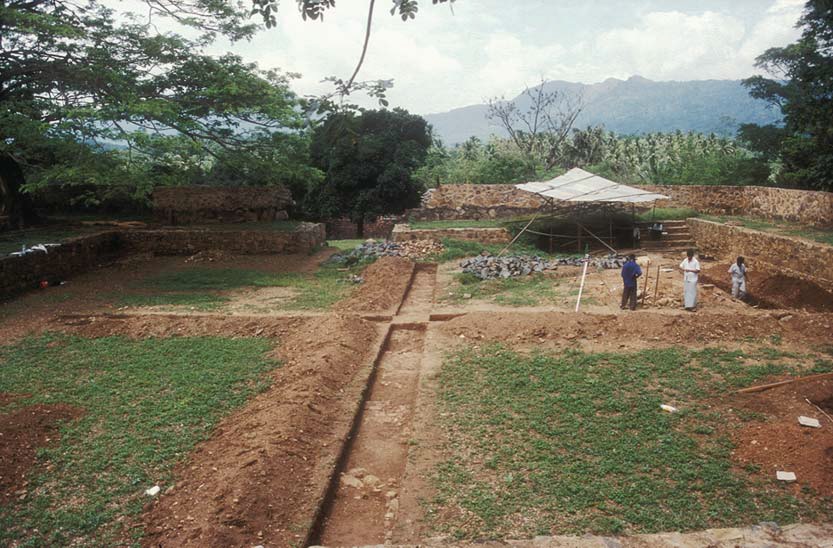
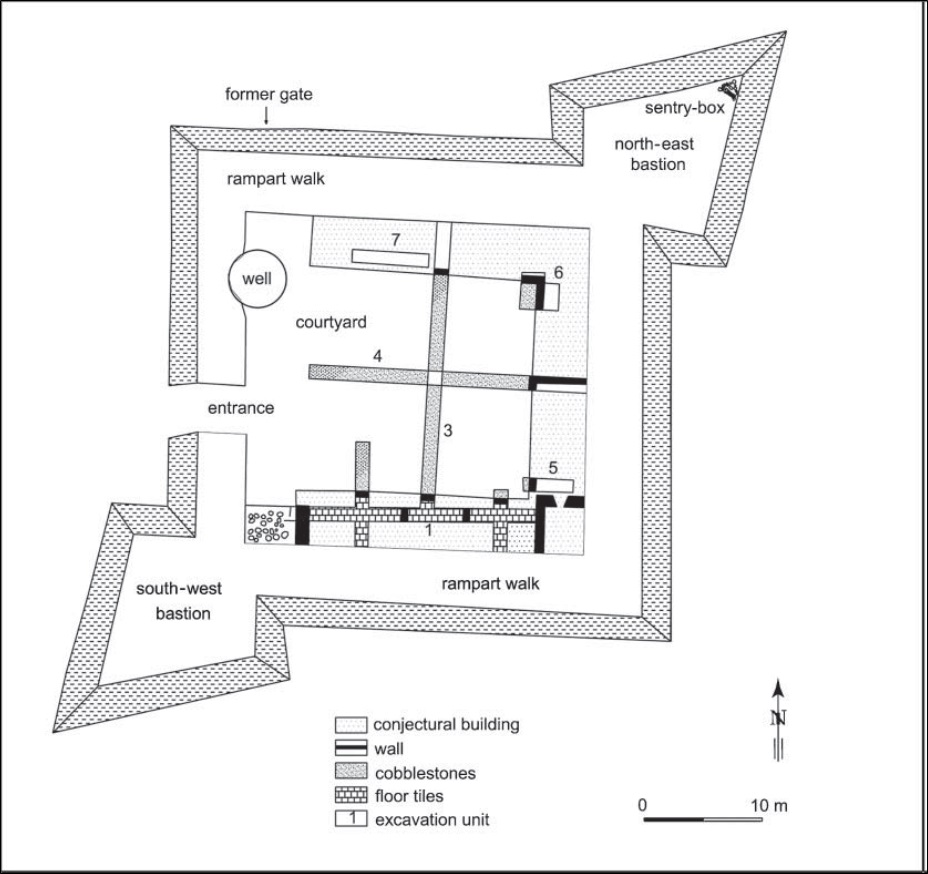
The Findings of Katuwana Dutch Fort excavation
During the excavations, a curious feature was noted in trench number 6 – Â a layer of charcoal that represents a burning activity. This indicated that the excavated structures were not the first structures on the site. Based on the stratigraphy the archaeologists believe the charcoal and underlying cultural layer represents a pre or early colonial phase of occupation.
The excavations at Katuwana revealed a variety of artifacts, which are found in the below table. Of these, the largest category consists of indigenous earthenware amounting to 83.3% of the total artifact fragments. The European artifacts include red-glazed earthenware, glass bottles, and clay tobacco pipes. Chinese porcelain was also found within the fort which is a common artifact type found in VOC settlements throughout the region.
Analysis of this artifact assemblage gives new information into the life of the inhabitants of the fort, especially of the interaction between Europeans and Sri Lankans. The reuse of European objects (a broken tobacco pipe was found to have been reworked) indicates a limited supply from Galle and the larger number of indigenous objects may represent a process of adaptation by the Dutch; however, the latter fact may even reflect a culturally mixed garrison, of which even historical records indicates so.
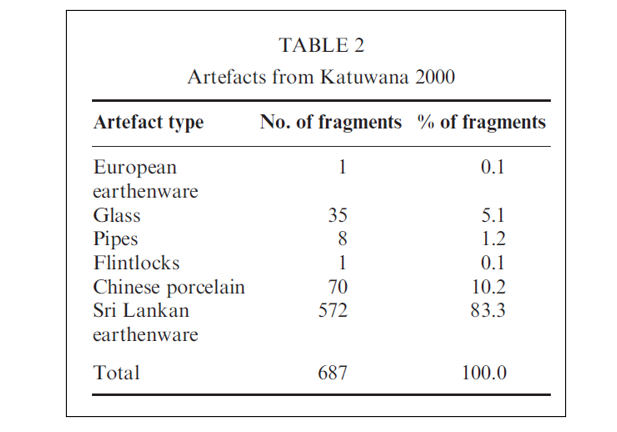
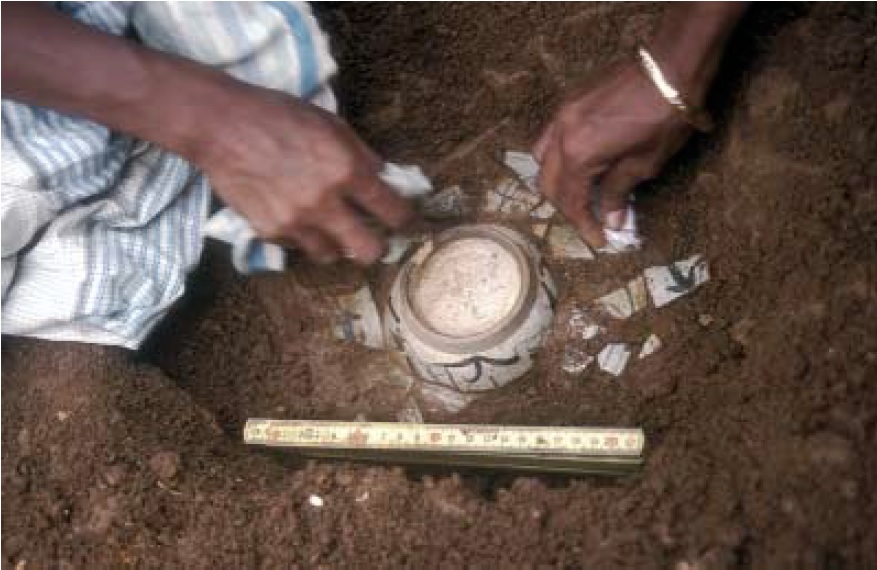
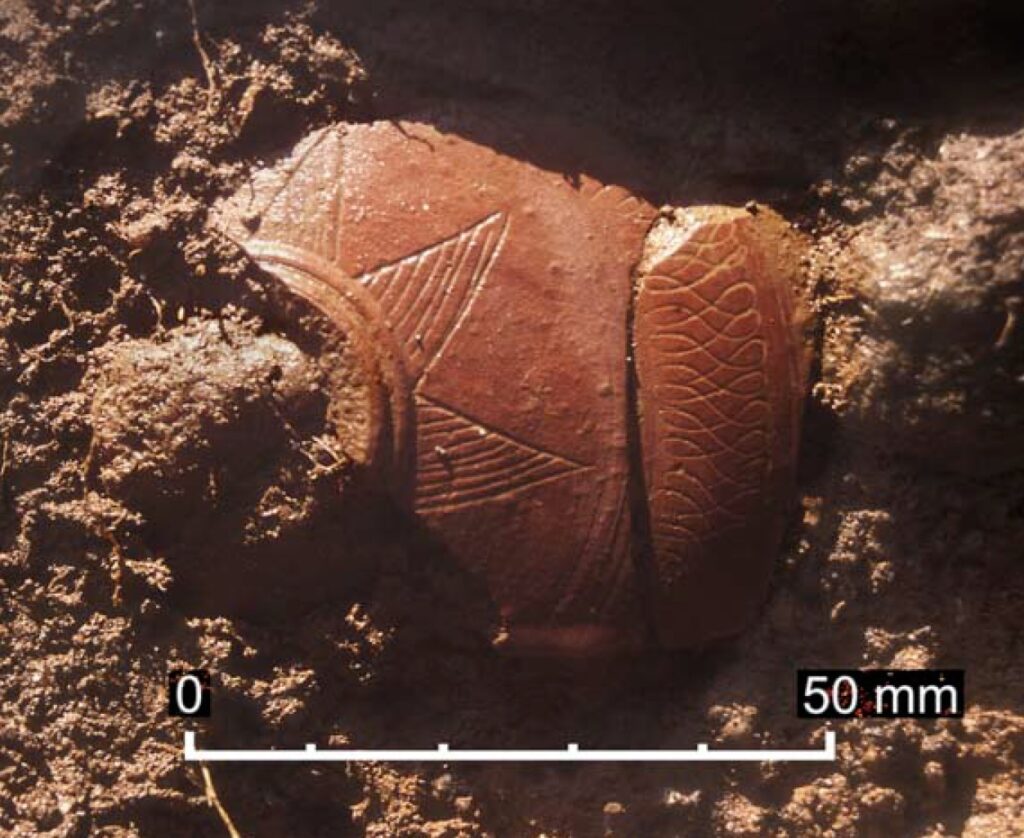
As only 15% of the site was excavated, deeper understandings into the cultural interactions within the fort and with its surroundings could not be investigated. However, this pilot project showed the potential of archaeological investigations into colonial settlements and of the nature of archaeological assemblages of the 17th and 18th centuries. The further investigation of such sites in Sri Lanka could re-open this discourse and with future synthesis within Sri Lanka, meaningful comparative studies could be made to other VOC sites around the Indian ocean. It is hoped that the recent Jaffna fort excavations and the recently concluded Galle fort excavations would inspire the new generation of archaeologists to explore the materiality of the early modern period in Sri Lanka.
References
Jayasena, R. M., 2002. “Om oogh in ‘t zeyl te houden†Historische archeologie van het VOC-grensfort Katuvana in Sri Lanka. Master’s thesis. University of Amsterdam.
Jayasena, R. M., 2006. The historical archaeology of Katuwana, a Dutch East India Company fort in Sri Lanka. Post-Medieval Archaeology: Jamestown, 1607-2007.40 (1), 111–128. [online]. Available from: http://www.tandfonline.com/doi/abs/10.1179/174581306X156391
Lakdusinghe, S., 2001. The Katuwana Archaeological Heritage Project Excavation Report-2000. Postgraduate Institute of Archaeology (PGIAR).



This is a whole lot of information ! .Thanks a lot!